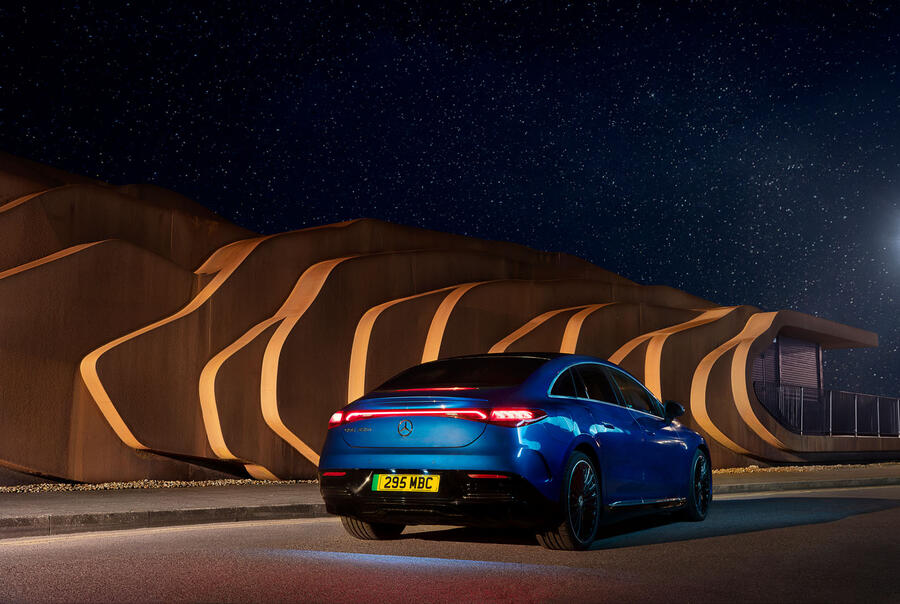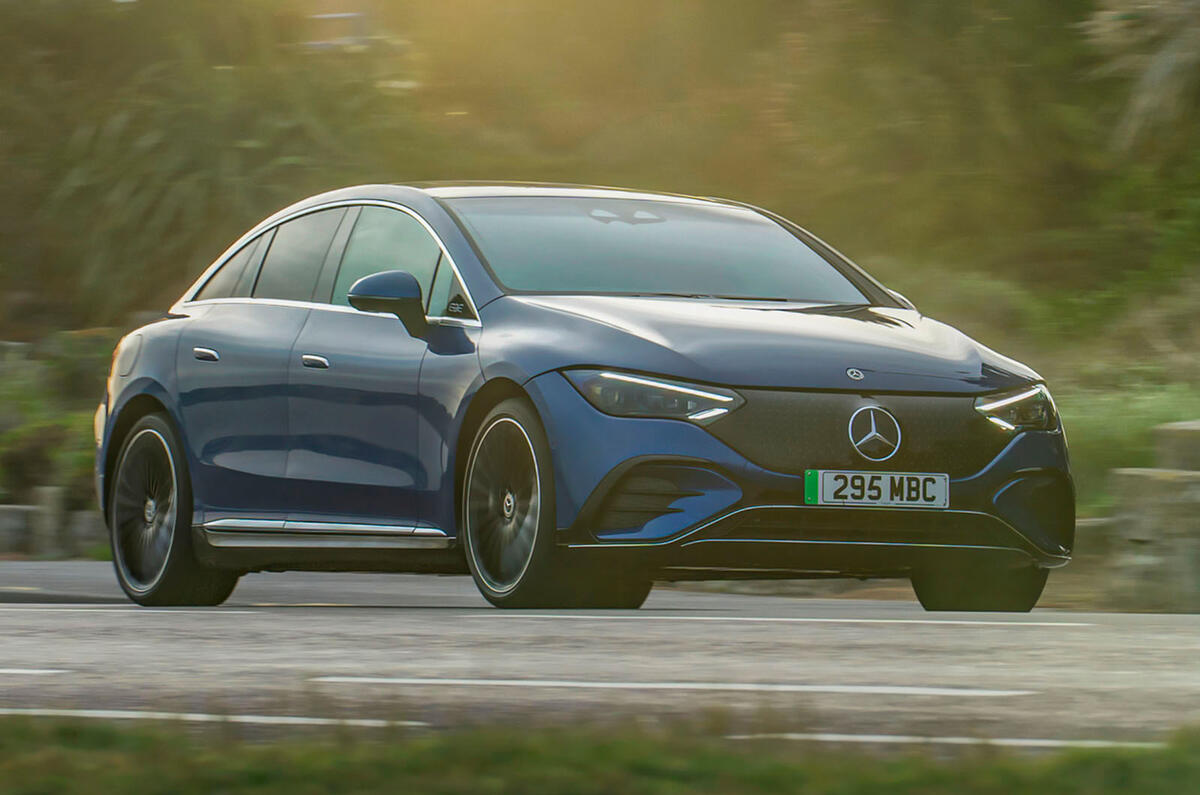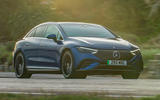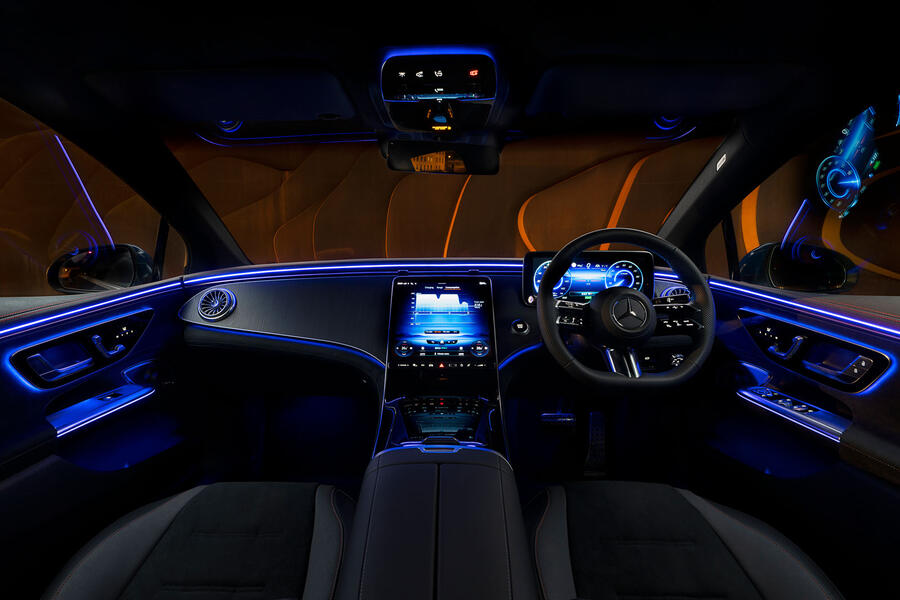How highly you rate the new Mercedes EQE is likely to depend on what it is that you want from your mid-ranking Benz saloon.
Traditionally, the role has
 been well defined and played dependably well by the Mercedes E-Class. The hallmarks are space, comfort and best-in-class isolation, all in an elegant but understated design and one with handling that, if not outright engaging, feels quietly thoroughbred. All in, a class act.
So to the EQE, which in terms of both style and technology is much the shrunk-down Mercedes EQS, and is tested here for the first time on British roads. What is there for the E-Class owner who wants to go electric?
Probably not an overwhelming sense of value for money. The entry- level, rear-driven EQE 300 offers roughly the same performance 
as the E200 but in like-for-like
 trim costs almost £30,000 more than its £45,000 petrol-engined peer. Mercedes claims the EQE 
and E-Class achieve similar profit margins, and it’s not hard to see why.

Then there’s the aesthetic. I can speak for only myself here, but Mercedes’ differentiation of its electric saloons from the ICE status quo has resulted in something a little formless. It probably won’t surprise you to know that the EQE is shorter, wider and taller than the loping E-Class. Sure, the nose is smart enough and the rear diffuser is purposeful, but altogether the car lacks personality, much like the very similar but slightly slipperier EQS.
The EQE starts to make its case as you drive it, but only in specific ways.
The big positive is ride quality, which for our EQE 350+ AMG Line test car, on 21in wheels, is fabulously serene. The suspension is modelled on that of the S-Class, with air springs all round, and it shows. Apart from the sharp shocks that few if any pneumatic systems deal with well, the EQE cruises down even rougher roads unperturbed and ghosts along motorways in restorative fashion. Speed bumps are insouciantly dispatched and no E-Class owner could ever complain about isolation. It’s church-quiet in here.
However, E-Classists might like a more pedigree (that is, lower and more supportive) driving position and a more substantial glasshouse. Because of its underfloor battery, the EQE often feels crossover-like from behind the wheel, and having an extremely high scuttle is never quite enough to disguise this.
Equally, the drawback of the towering windowlines and chunky false transmission tunnel is that the windows and windscreen look short and the cabin feels pokey, especially in the back, where occupants don’t benefit from the EQE’s shapely and lavish dashboard, which brings a GT-style ambience. Factor in the modest boot and the E-Class is not only a nicer place to sit for all but also more practical.
That said, I can see the appeal
 of the EQE for people who want 
to feel they’re ensconced within some high-tech fortress on wheels, sealed off from the dim and the grit of the outside world. Maybe too sealed off, mind – rearward visibility is surprisingly poor. In fact, even the new Ferrari 296 GTB does better in this respect, and for something as large and heavy as the EQE, that simply isn’t good enough.













































Join the debate
Add your comment
I just took delivery of a new Genesis Electrified G80, probably the closest competitor to the EQE. Compared to the equivalent version of the Mercedes it's some ten grànd cheaper (£77.5k compared to £89k) considerably faster with two motors and has all the same tech. Not surprisingly, given the designer was ex styling cheif at Bentley it bares more than a striking resemblance to a said Bentley!
After a week of ownership I remain very pleased with my choice.
This innovative beauty gets 3.5 stars, a 1.0L Skoda-badged VW gets 4 stars. Right.
In what way is it innovative?
Here's a tip for your next job interview: don't answer a question with a question, it makes you look really unprepared - or worse.
Another ridiculously overweight vehicle. Maybe governments should think about charging extra VED depending on weight, who knows, it might give the car manufacturers some incentive to think a lot more about this aspect of car design.
It's also proportionate to tyre wear - and the extra pollution this creates, which we are only just beginning to worry about.